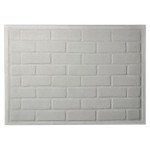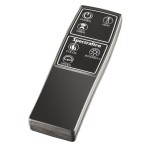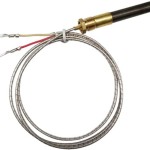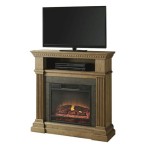Best Smelling Wood To Burn In A Fireplace
The enjoyment of a fireplace extends beyond visual warmth and crackling sounds. The aroma produced during combustion significantly contributes to the overall experience. Selecting wood based on its scent can transform a simple fire into a multisensory delight. This article explores various types of wood known for their pleasant fragrances when burned, providing practical insights for enhancing the ambiance of your home.
Factors Influencing Wood Aroma
The scent of burning wood is a complex characteristic arising from the wood's chemical composition. Resins, oils, and volatile organic compounds (VOCs) present in the wood are released when heated, producing the distinct aromas. Several factors influence the intensity and type of scent produced.
Wood Species:
The inherent characteristics of the tree species dictate the underlying chemical makeup of the wood. Hardwoods and softwoods, for instance, have differing compositions leading to varied scent profiles. Some species such as fruit trees, like apple or cherry, are renowned for their sweet, fruity aromas, while others such as pine produce a more resinous, sharp fragrance.Moisture Content:
Properly seasoned wood, with a moisture content below 20%, burns more efficiently and produces less smoke, leading to a cleaner and more pronounced aroma. Green or unseasoned wood contains excessive moisture, which inhibits complete combustion, generating acrid smoke that masks the wood's inherent scent. Kiln-dried wood offers a reliable option for consistent dryness and optimal aroma release.Combustion Efficiency:
Efficient combustion ensures that the wood burns cleanly, extracting the maximum amount of energy and releasing the desirable volatile compounds that contribute to the fragrance. Incomplete combustion produces smoke and creosote, obscuring the wood's natural scent and potentially posing safety hazards. Ensuring adequate airflow and using a well-maintained fireplace are critical for achieving efficient combustion.Top Wood Choices for Pleasant Fragrance
Several wood species stand out due to their exceptional fragrance when burned. These options offer a diverse range of scents to suit various preferences.
Fruit Woods (Apple, Cherry, Pear):
Fruit woods are highly regarded for their sweet, subtly fruity aromas. Apple wood, in particular, imparts a gentle, slightly sweet scent that is reminiscent of orchard blossoms. Cherry wood produces a richer, more complex aroma with hints of almond and spice. Pear wood offers a similar, yet more delicate, fruity fragrance. These woods are generally easy to ignite and burn relatively cleanly, making them excellent choices for creating a welcoming and comforting atmosphere.Hickory:
Hickory wood delivers a strong, smoky aroma that is both sweet and slightly bacon-like. It is a dense hardwood that burns long and hot, making it ideal for extended fires. The distinct scent of hickory is highly sought after by those who appreciate a robust and invigorating fragrance. Its strong aroma can also be used strategically to add a pleasant smoky note to a room.Alder:
Alder wood is a mild, slightly sweet-smelling wood that is often compared to maple. Its light fragrance is not overpowering, making it a good choice for those who prefer a more subtle aroma. Alder burns cleanly and produces a relatively low amount of smoke, further enhancing its appeal as a fireplace wood. It is also considered a sustainable choice, as alder trees grow relatively quickly.Pine:
Pine stands apart from hardwoods with its strong, resinous scent. While some find pine’s intense aroma overpowering for prolonged burning, it provides a fresh, woodsy fragrance when used sparingly. It is best used mixed with other hardwoods to balance the intensity. Due to its high resin content, pine ignites easily, making it useful for starting fires. However, it is also important to note that pine tends to produce more creosote than hardwoods, so regular chimney cleaning is essential.Cedar:
Cedar wood boasts a distinctive, aromatic scent that is naturally insect-repellent. The aroma comes from the natural oils present in the wood, which release a pleasant fragrance when heated. While not traditionally used as a primary fireplace wood due to its tendency to spark, a small amount of cedar can add a unique and refreshing aroma to a fire.Considerations for Scent Selection and Usage
Selecting the best smelling wood for a fireplace involves considering individual preferences and usage requirements.
Personal Preference:
Scent is subjective, what one person finds enchanting, another might dislike. Experimenting with various wood types is essential to discovering fragrances that resonate personally. Start with smaller quantities to test the aroma before committing to larger purchases. Consider the specific context as well; a strong, smoky scent might be preferable for a rugged, rustic setting, while a lighter, sweeter aroma may be more suitable for a formal living room.Mixing Wood Types:
Combining different wood types can create a more complex and nuanced aroma profile. For instance, mixing a small amount of pine or cedar with a hardwood like oak or maple can add a touch of freshness to the fire. Combining fruit woods like apple and cherry can create a more layered and interesting sweet scent.Sustainability and Availability:
Consider the sustainability of the wood source. Opt for wood from responsibly managed forests to minimize environmental impact. Check with local suppliers for availability and pricing. Some wood types, such as fruit woods, may be more difficult to find and more expensive than common hardwoods like oak or maple. Prioritizing locally sourced wood reduces transportation costs and supports local economies.Safety Precautions:
Regardless of the wood type, ensuring safe burning practices is paramount. Always use a fireplace screen to prevent sparks from escaping. Maintain a clean chimney to reduce the risk of chimney fires. Never leave a fire unattended. Install and maintain carbon monoxide detectors to protect against the dangers of carbon monoxide poisoning.Choosing the right wood enhances the fireplace experience beyond providing warmth and ambience; it engages the olfactory senses, creating a comforting and inviting atmosphere. By understanding the factors that influence wood aroma and carefully selecting fragrant wood types, one can transform a simple fire into a memorable sensory experience.
The specific experience and intensity of the aroma may vary depending on the quality of the wood, the type of fireplace, and the ventilation in the room. It is advisable to consult with experienced fireplace professionals for guidance on safe and effective wood-burning practices.
Different hardwoods also bring unique characteristics. Oak wood is a popular choice for its long burn time and steady heat output, but its scent is relatively neutral. Maple wood is a medium-density hardwood with a subtle, slightly sweet aroma. Birch wood is known for its bright, clean flame and a pleasant, slightly aromatic scent. These hardwoods can serve as a base for fires, complemented by smaller quantities of more fragrant woods to enhance the overall aroma.
In addition to using specific types of wood, one can also enhance the aroma of a fire by adding natural aromatics. Dried herbs such as lavender, rosemary, or sage can be sprinkled on the fire to release their fragrance. Citrus peels, such as orange or lemon, can also add a refreshing and invigorating scent. However, it is crucial to use these aromatics sparingly and to avoid burning anything that could release harmful chemicals.
Proper storage of firewood is essential for maintaining its aroma and burning efficiency. Store firewood in a dry, well-ventilated area to prevent moisture buildup and mold growth. Stack the wood loosely to allow for airflow. Avoid storing wood directly on the ground, as this can promote rot and attract pests.
In conclusion, the selection of wood for a fireplace offers an opportunity to customize the sensory experience. By understanding the characteristics of different wood types and employing safe burning practices, one can create a warm, inviting, and fragrant atmosphere in their home.

5 Great Smelling Firewoods For Winter Voss Land Tree

The Best Wood To Burn In A Burning Fire Pit Part 1

The Best Firewood For Burning

Forget Palo Santo This Will Make Your Room Smell Like A Campfire Architectural Digest

The Best And Worst Types Of Wood For Burning In Fireplace Bob Vila

Best Smelling Firewood To Burn Top Choices

The Best Smelling Firewood Logwise

What Is The Best Firewood To Burn For Any Situation

Best Firewood For Heating The Family Handyman

5 Best Firewood Types To Burn For Your Fireplace Sunnydaze Decor
Related Posts








